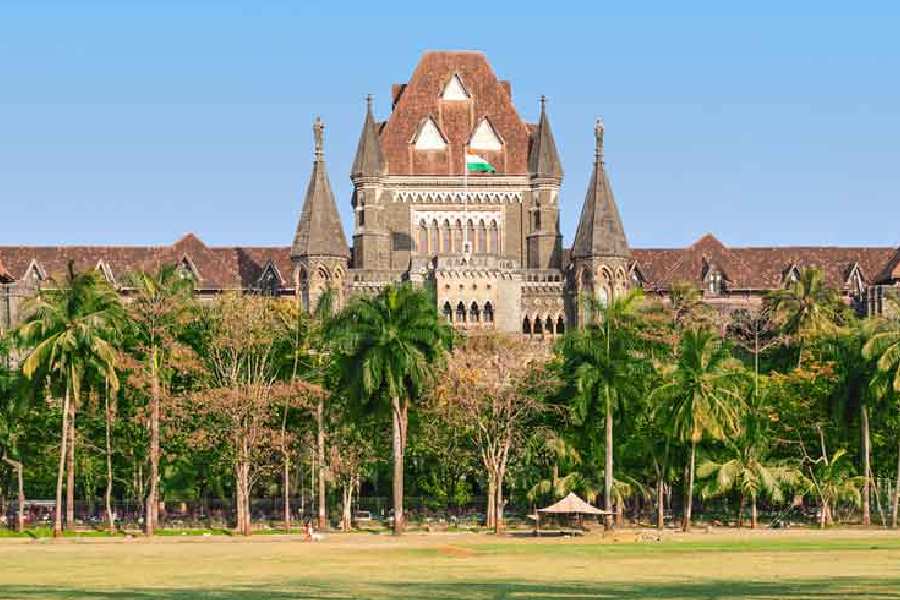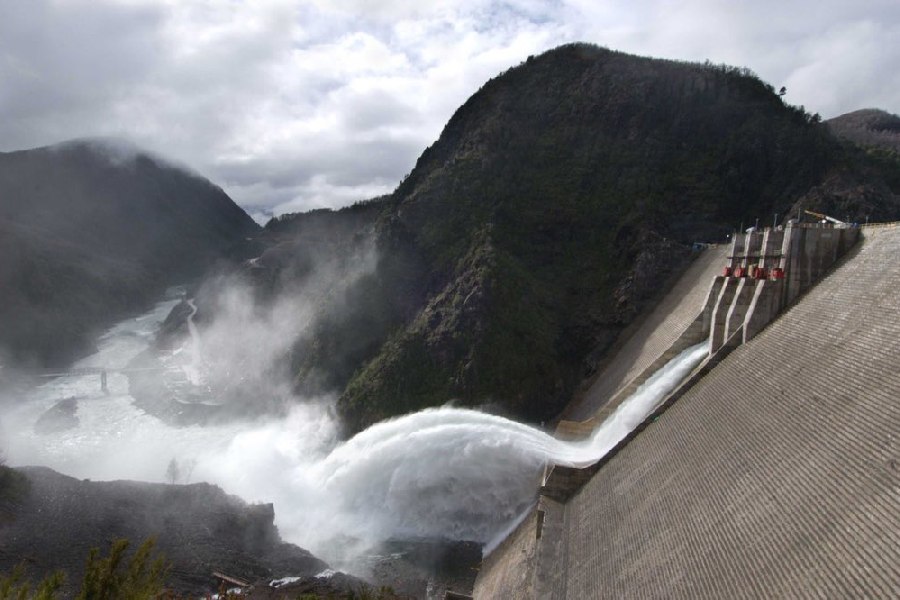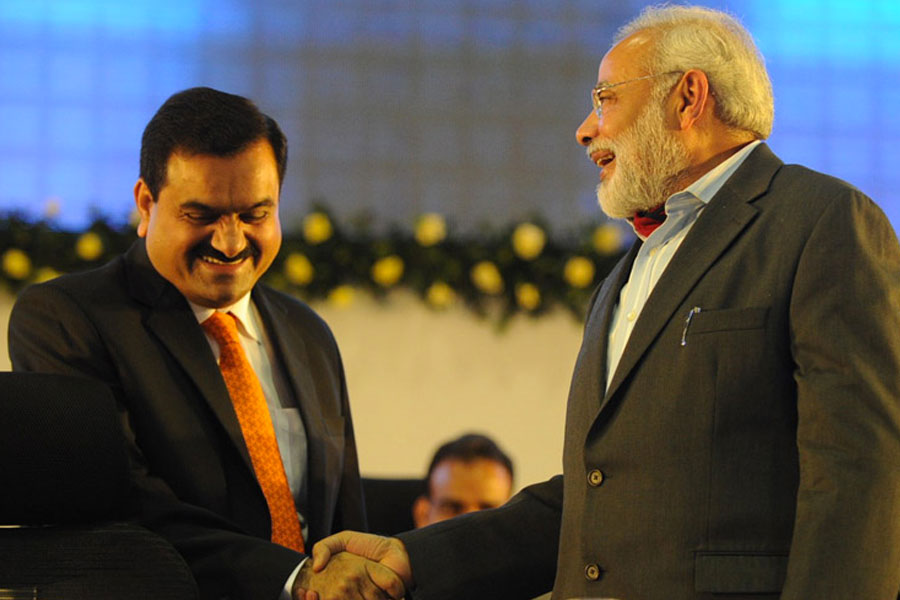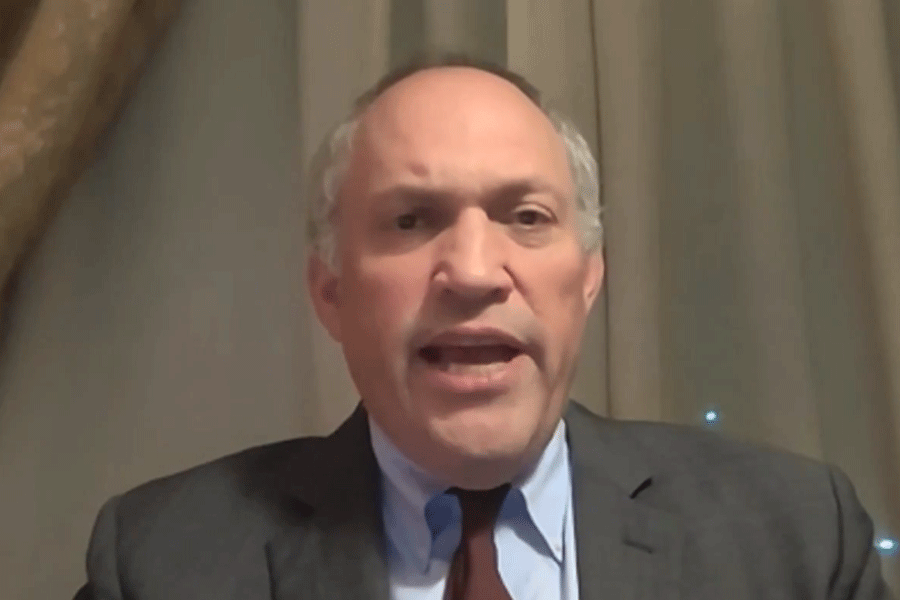
The clay model of Mahatma Gandhi's feet in Philip Jackson's studio
London, March 12: Mahatma Gandhi, once described as a 'half-naked fakir' by Winston Churchill, was fully clothed and more when he took his place near Britain's wartime Prime Minister in a hush-hush operation yesterday.
A large lorry brought the 9ft statue from the Morris Singer Bronze Foundry in Lasham, Hampshire, to Parliament Square in London and locked it permanently into position, using special iron rods, on a 3ft plinth.
Except that the statue was totally covered so that 'you cannot see even the tips of Gandhi's toes'.
Saturday's unveiling of the statue right opposite Big Ben and the Palace of Westminster will possibly be the biggest Indian event in the UK since Independence.
As many Indians as possible have been invited, Amitabh Bachchan among them.
In place of Narendra Modi, the honours will be done by Arun Jaitley, who issued a statement: 'The statue will help ensure that the legacy of Gandhi lives on for future generations. It also marks an important, historic moment celebrating the strong bond between our two nations.... This lasting friendship is just one of many legacies left by Gandhi.'
Two people who deserve a mention are the maverick Labour peer and economist Meghnad Desai, who 'air-dashed' between London and Delhi for five months raising the money, and the sculptor Philip Jackson, who was asked by the British government to make the statue in double quick time and did so.
Although the statue is Britain's 'gift' to India, the money had to be raised through public subscription, as was the case with all such installations, including that of Churchill. David Cameron probably had a hand in deciding Gandhi would go into Parliament Square, which has found room for all notable British Prime Ministers but not Margaret Thatcher, so controversial still is Britain's first woman Prime Minister.
Desai, who set himself a notional target of £1m and has so far raised £1.25m, has revealed who gave what. In Britain, a young entrepreneur, Deepak Yadav, pledged £50,000, while two other businessmen, Rami Ranger and Vivek Chadha, chipped in with £100,000 each. Steel tycoon Lakshmi Mittal was 'very straightforward' and has also given £100,000.
Desai admits he has contacts in both India and Britain and a fair amount of goodwill, which is why he was asked by the British government to do the fundraising.
From India, Rahul Bajaj called: 'I will give you £200,000 - just like that!'
'Rahul Bajaj and my friendship goes back 20-25 years,' says Desai, sipping a cup of tea at his London home.
Then, Desai goes on, 'through a friend (the Infosys founder N.R.) Narayana Murthy contacted me. He sent an email - 'I hear you are doing this thing, lovely thing. Tell me a little bit about what this is about.' He is a very meticulous man. He asked lots of detailed questions and I answered him. He said, 'OK, my family foundation will give £200,000 but I have to ask my children's permission.' I said, 'Fine'. He said, 'Because you are doing this and I believe in it I will ask other people to give money as well'.'
'Once he gets going, he gets going,' Desai goes on. 'He persuaded the board of Infosys to give £250,000. Kiran Mazumdar-Shaw helped as well - she is on the board of Infosys. They together persuaded (the Infosys board).'
In Britain, there have been numerous small donations online from members of the public. 'A lot of my House of Lords colleagues gave me cash, £5 to £20. One person gave me £2,000.'
Desai's novelist wife and fellow fundraising trustee, Kishwar, has flown into London with copies of a brochure, printed in India, which includes the names of all the donors.
The unveiling will be, in a sense, only the beginning.
'This is a continuing charity,' Desai emphasises. 'The idea is, we carry on activities commemorating Gandhi and his life in many ways, perhaps reaching out and having a public lecture or essay competition for students. I would really like to see a dedicated building where we have Gandhi memorabilia and make it into a Gandhi museum if we can raise the money for that.'
Desai has seen the clay model but deliberately avoided the finished bronze statue - 'I want the mystery of seeing it unveiled.'
But what he has seen has convinced him that 'this is one of the best statues of Gandhi anywhere in the world. If you stand at a certain angle he starts looking at you. It's an amazingly beautiful expression he has got.'
The word is that Gandhi's statue will be the 11th and last in Parliament Square but that could change.
With a mischievous grin, Desai suggests: 'You Bengalis have to start an agitation for Tagore in Parliament Square.'
Maybe the former governor of Bengal, Gopalkrishna Gandhi, who will be present, can launch the campaign.











